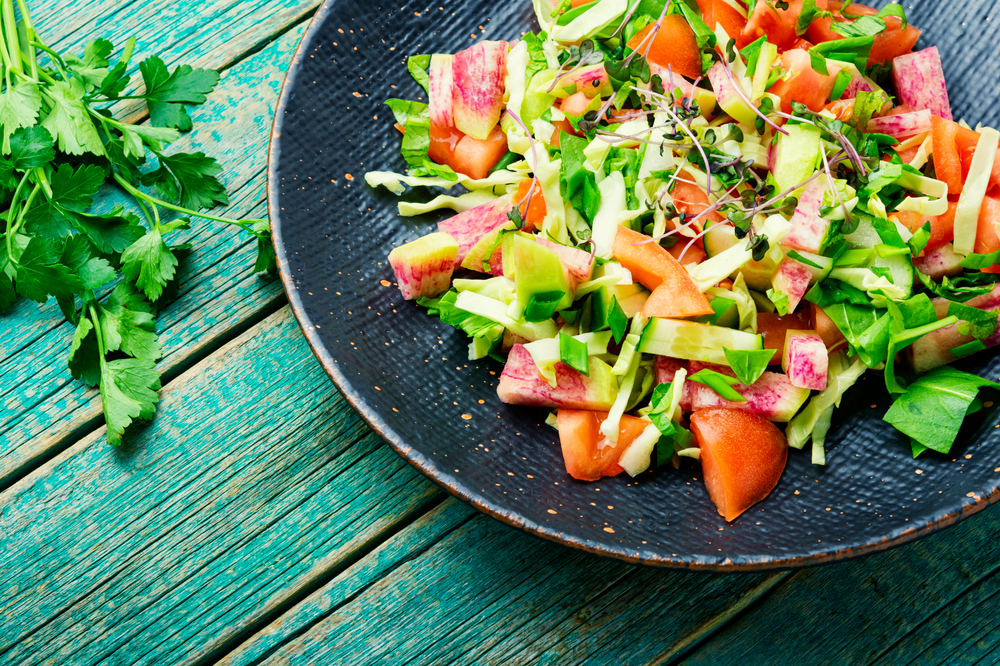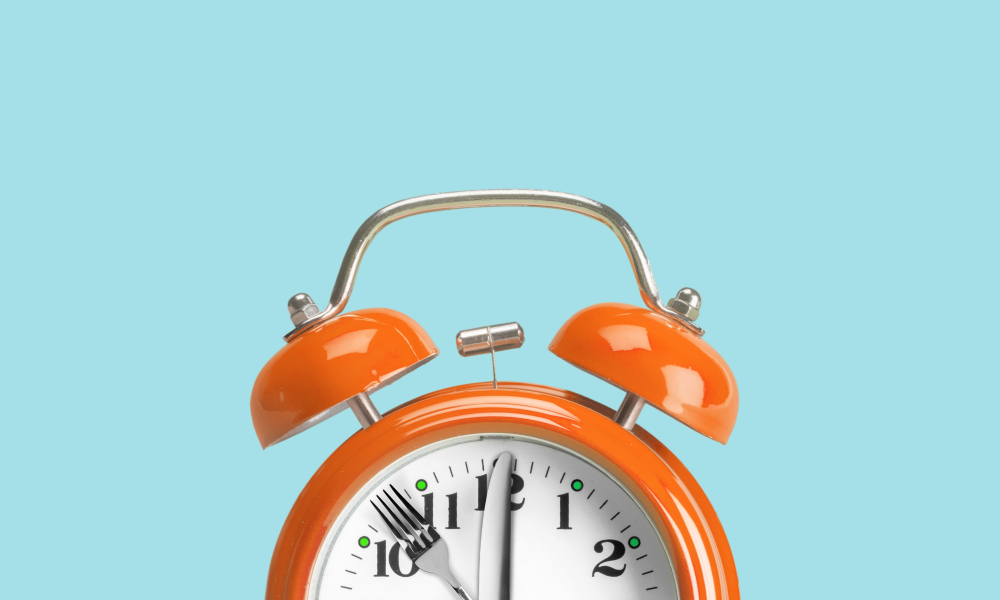3 Day Holiday—Fast & Healthy

Summer is around the corner, and yes you are invited!
And while we are all keeping health and wellness on our mind and playing it safe and smart on all levels, we are aware of the calling many of us have heard that now is the time to get even more serious about our wellbeing—and actually take steps to get and to be as healthy, fit and happy as we possibly can be.
Now the standard reply is:
“Yes! This is the time, but given my holiday plans, I’ll start on Tuesday.”
And we also know where that mindset has taken us in the past. Fast to nowhere.
Instead, begin now, follow our 3 Day Holiday Fast & Healthy Weekend and get a jump start on feeling great and looking even better for the rest of your life. The program is simple and consists of 4 pillars, fasting, nutrition, movement, and rest. You can put one or two into play and still have a great weekend. Put them all into play, and you are on your way to a healthy makeover.
Fast & Healthy Weekend Pillars

What To Eat
No one is interested in a holiday weekend that feels like a chore, so here is some good news. We aren’t going to tell you what not to eat this weekend. Chances are, you truly already know which foods or beverages are draining your vitality. If you are motivated to do so, eat and drink less of these health bandits. We will instead focus on what you should eat, and we zoom in on four essentials to add into your daily menu that at the least will nourish your body and make sure you are well-fed.
Water
Holiday weekends may be more famous for other types of drinking, but this round, you are committed to upping your healthy hydration too. Plan on downing 8-10 glasses of water throughout the day, estimating that you should consume 30–35 mL of water per kg of body weight. An excellent way to manage that is to drink a glass when you wake up before any tea or coffee set a timer on your phone for 55 minutes, and every 55 minutes, drink another glass of water. Add more for thirst or if you are out in the sun or are especially active, add more hydration. Try adding a pinch of salt to your food that day and if you are feeling depleted, try adding your favorite electrolyte supplement to your water to manage your electrolyte balance.
Large Mixed Green Salad
There are so many reasons to eat a green salad each day. Aside from their diversity and the ability to personalize your taste and preference for textures, eating a heaping healthy dose of vegetables, incredibly fresh and raw, has a significant and positive effect on your health. Get creative; you can add proteins, nuts, dried berries, beets, cheese, eggs, and it is excellent to add some fermented foods like kimchi to add additional fiber and prebiotics to support your digestion. Eating a robust salad each day can ensure you receive an abundance of your daily nourishment.
Herbal Tea
Tea has been celebrated through the millennia for its many benefits. Adding tea into your daily regimen is especially effective when working to transform your lifestyle. Typically, we are restricting ourselves instead of adding something that has pleasant attributes to our day. There are endless varieties of herbal teas to consider and experience. A few celebrated classics to start are Ginger, known for its ability to settle an upset stomach, Tumeric, which helps with inflammation; and Jasmine, an anytime favorite. Take advantage of the natural ceremony that is typically associated with pouring a cup of tea. Use this to your advantage and transform your cup of tea into a daily ritual that gives you a chance to pause, reflect and reenergize for your day.
Yep, that is it—we knew you could do it. We linked to a few of our go-to recipes. Fit these in during your feeding window this weekend, and you will be surprised how easy it is to flip the switch to healthy eating.

When To Eat
Managing when you eat is a game-changer. If you are new to the idea of fasting, this might seem a little scary at first, but rest assured, if you are not eating every minute of the day, you are already fasting. While there is extensive research on the benefits of fasting, the idea is quite simple. It is basically abstaining intentionally from consuming food. There are many benefits to fasting and also many ways to schedule a fast. Modulating or extending the window of the fast shortens your feeding window and initiates various healing processes inside the body—like autophagy which allows the body to regenerate and restore and renew on a cellular level. Intermittent fasting is flexible, so consider your holiday schedule and the needs of your friends or family and adjust your fasting/feeding window appropriately. Here are a few ways to integrate short fasting into the long weekend—and still have the energy to have fun. Note you don’t have to eat non-stop during your eating window!
Time-Restricted Eating
If you have never fasted before, consider starting with a Time Restricted Eating
pattern such as 12:12. This balanced eating/fasting window has been studied as integral to longevity around the world. Pick your window, e.g., if you wake up at 8 am-8 pm eating window and 8 pm-8 am is your fasting window. Ideally, work around your body’s natural circadian rhythm, which means you sleep through most of the fast–however, committing to a set window is vital.
Intermittent Fasting
Intermittent Fasting is simply a broad term that encompasses multiple eating patterns that consist of eating and fasting windows. As fasting becomes more popular, more variations are created, although they are not backed by clinical trials or peer-reviewed research. Unless you have a medical condition exacerbated by fasting, it is generally safe to experiment with your eating patterns for a short period. However, we always lead with caution and suggest you check with your health practitioner or wellness coach, who is more intimate with your health goals.
You can extend your windows for additional fasting benefits. Some popular IF variations include
16:8 Fasting
During this longer fast, your blood sugar and insulin levels are low, and some of the stored glucose (glycogen) is depleted, and your body begins to look for fuel in your adipose (fat) tissue. As the body is not busy digesting, it can also focus resources to heal and repair.
20:4 Fasting
Each fast can be considered progressively challenging, but typically it is our mindset and conditioned habit of eating that makes it difficult. The 20:4 eating schedule is also called the Warrior Diet and was inspired by warrior tribes who ate small amounts of whole processed foods during part of the day and a larger meal in the evening. Make sure the food that is consumed is high quality and nourishing. Pick an eating window of 4 hours that allows you to snack and culminate in one larger meal. Again, it is not ideal to binge on food for 4 hours straight; that will make you feel awful, and also try to avoid having your eating window close to the time you go to sleep—finish eating 3 hours before bed, at least.
One Meal A Day
One Meal A Day or OMAD is self-descriptive. You consume all of your food that day in an hour—essentially making this a 23:1 extreme intermittent fasting regimen. This is challenging for many who are used to consuming food all day long, but the practice is tolerated. The key to success is to pack your consumption with healthy whole foods and foods that don’t trigger cravings for more sugar and or processed refined carbs with no nutritional value. Also, avoid drinking up your calories during your fasting window, although drinking a spirit with your meal isn’t the end of the world.
24 Hour Fast
A 24 hour fast can be a test of your will as well as a testament to your willpower. The good news is it is a simple concept, don’t eat for 24 hours. Its important to stay hydrated and eat well before the fast, yet refraining from eating for a full day is not as challenging as it may sound. The most straightforward approach is to eat dinner the night before, then stop eating for the rest of the night, fast through breakfast, fast through lunch, then break your fast with a small snack or cup of bone broth at the 24-hour mark and a meal a short time after that. When you look at the 24-hour fast this way, you will realize that you have fasted for 24 hours in your past simply because you had a busy workday and did not take time to eat until dinner. You can do this and the benefits your body receives for having a longer extend the time to focus on rejuvenation is even more powerful and beneficial
Post-Holiday Extended Fast
After the holiday, you may which to experience the more extensive benefits of a prolonged fast. Extended fasting schedules are those that last more than 24 hours and are performed periodically throughout the year—the length of which depends on your health goals. For an extended fast, it is ideal to discuss with a health practitioner that you trust. Some popular ways to extend fast include fasting for 36, 48, or 72 hours once a month or trying a longer nourished fast like the fasting mimicking diet.

How To Move
Holiday weekends are a chance for you to start moving and or step out of your typical workout rut and try a new activity or routine that inspires you. If you aren’t currently training regularly, pick any of these workout options listed below–or better yet, try a new one each day. Be sure to manage your intensity level during the workout so you don’t feel overwhelmed (or over sore!), which could discourage you from continuing with a fitness regimen come Tuesday.
Not sure how to pick? Don’t make a big deal of it. We often talk ourselves out of something before we even give it a chance. Just try what sounds intriguing. In the long run, the best training regimen to maximize your human potential is full of variety and a mix of movements and modalities that move your body from many angles. Use vacations and holiday weekends to experience something new. You can participate in the workout in a guided session by finding a class nearby–or follow along with a digital experience using a fitness app or a training platform on the web. Bring a workout buddy to make this part social and even more enjoyable. PS. We linked to a few of our editor’s favorites!

When To Rest
The best gift you can give yourself during a holiday weekend is a good night’s sleep. Sleep may very well be one of the single best ways to heal our minds, bodies, and lives. Make it a priority to strengthen your bedtime ritual this weekend–even if you are traveling and in a new setting. You may not have the opportunity to control everything about your sleeping environment, but at the least, take ownership over how much time you spend sleeping and what you do before and after your sleep to improve your chance for deep rest. As part of your bedtime rituals, try meditating and or a deep breathing practice for 10 minutes, read a book, have a cup of herbal tea designed to help you down-regulate, and turn off screens at least before bed. If following asleep is a challenge, listen to a sleep soundscape like this one from Headspace. IF your plans allow, try waking up naturally without an alarm. It is a sweet luxury.
Also, don’t discount the value of napping. This is a simple self-care activity that comes with our body and is available anytime, anywhere. Spend 20 minutes napping on a hammock in the shade or shut the bedroom door for a short mid-afternoon snooze. Set your timer so you keep it short and sweet, which is ideal for restoring energy and avoiding waking up feeling sluggish and unsatisfied.





